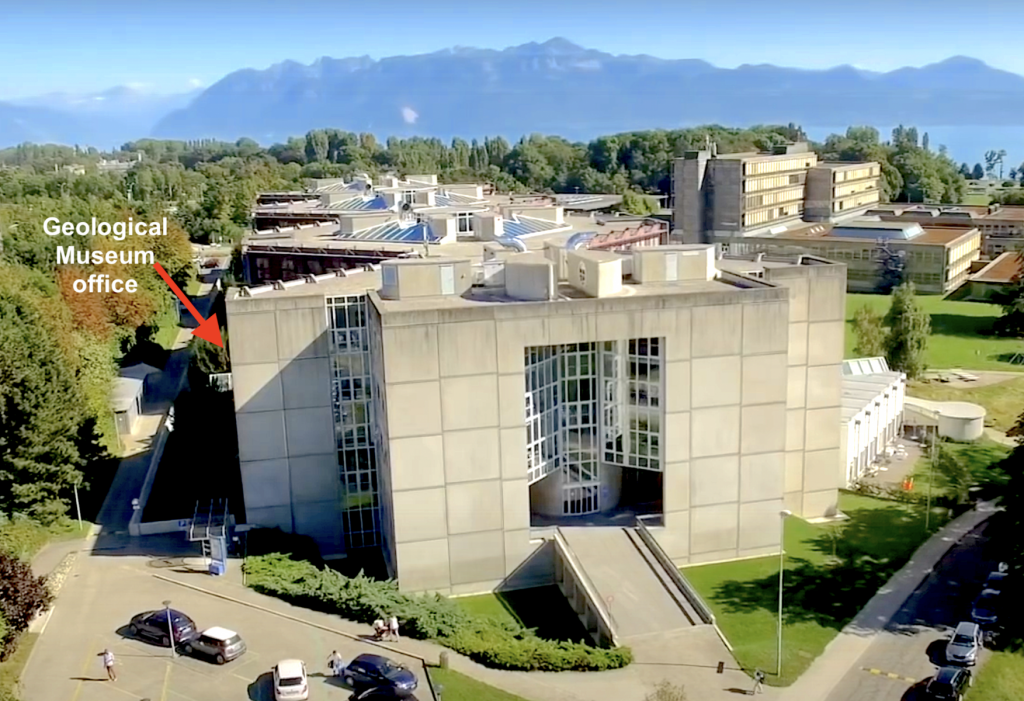The Permian-Triassic collections of the Geological Museum in Lausanne
Within the Geological Museum of Lausanne, which has just become a department of a new Cantonal Museum of Natural Science, there is a remarkable group of collections, stored in the ground of the University building Anthropole, that consists of more than ten thousand marine fossils and samples of the Permian and Triassic periods, between 290 and 200 million years ago.

It concerns Briançonnais Triassic localities (Swiss Prealps and Western Alps) Permian-Triassic localities from S Alps, Slovenia, Greece, Turkey, Armenia, Iran, Oman, Pakistan, N India, Nepal, Timor and also W Texas Permian localities plus Permian-Triassic localities from the Canadian Arctic.
A large batch of these samples frame the period of the greatest life extinction of all time, which saw the disappearance of nearly 95% of the existing species at the transition between Paleozoic and Mesozoic, 252 million years ago with a global warming of nearly 10° followed by a very long period of more than 5 million years for recovery.
With the associated data (field sections, drawings, photos, notes, etc.), during almost 30 years of activities at the museum of Lausanne with my collaborators, PhD students, colleagues and donors until 2006 to assemble this group of collections. During this time more than 200 publications, including several books, field guidebooks, scientific articles, and corresponding conference abstracts, have been issued and are available on Lausanne University Serval, Google Scholar and ResearchGate websites (Aymon Baud). These publications can help to a better understanding of the fundamental changes that the earth and the biosphere underwent during this crucial period in the history of life on earth.
From 2012, working with Hugo Bucher and his PhD students and colleagues, part of the collections from the new fieldworks (Kashmir, Oman and S China) are stored at the Paelontological institute and Museum of Zurich University and corresponding publications are on ResearchGate website (Aymon Baud).
In addition, and under my direction up to 2003, the Geological Museum of Lausanne has hosted collections of major importance with rock sample and associated thin sections. I will first mention the Permian-Triassic collections of Bernard Kummel from Julfa and Abadeh in Iran and from Salt Ranges in Pakistan. From Permian sections in Iran are the thin section collections of Paul Brönimann and Louisette Zaninetti as of Catherine Jenny. We also get the samples of the Triassic of Aghdarband (NE Iran) of Anton Ruttner. The Permian collection of Afghanistan has been deposited by Daniel Vachard. About Himalaya we get samples from Ladakh and Nepal from Michel Colchen. From his part, Jean Marcoux gave his complete collection with thin sections from Turkey, Ladakh and Tibet. From Pierre Charles de Graciansky we received his thesis collection from Turkey. Also, samples from the Permian of Thailand from Abbé Henri Fontaine have been hosted by the Museum.
If you are interested by one of these collections in Lausanne, you can find a more complete text in French here, taken from the “bulletin d’activité” of the Geological Museum 2002.
If you are interested by one of these collections, please contact the corresponding curator at your earliest convenience.
- Dr. Antoine PICTET, Conservateur de paléontologie, Quartier UNIL-Chamberonne, Bâtiment Anthropole, CH – 1015 Lausanne, Tél: +41 21 692 44 33, mail : antoine.pictet@unil.ch
- Dr. Robin MARCHAND, Conservateur de géologie et géophysique, Quartier UNIL-Chamberonne, Bâtiment Anthropole, CH – 1015 Lausanne, mail : robin.marchant@unil.ch
